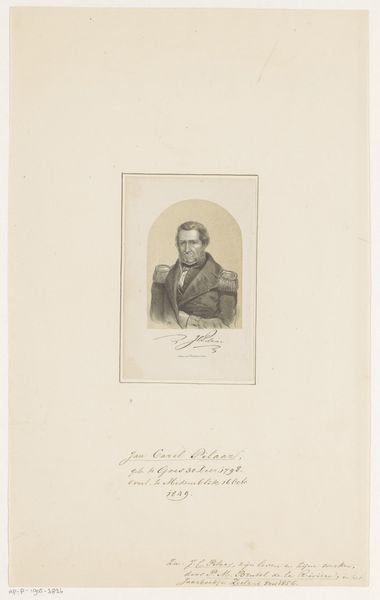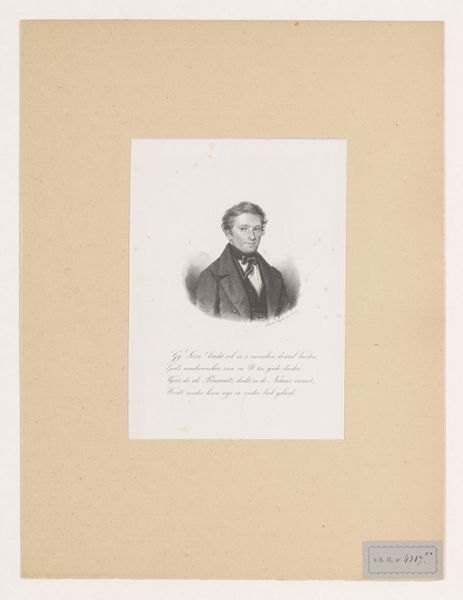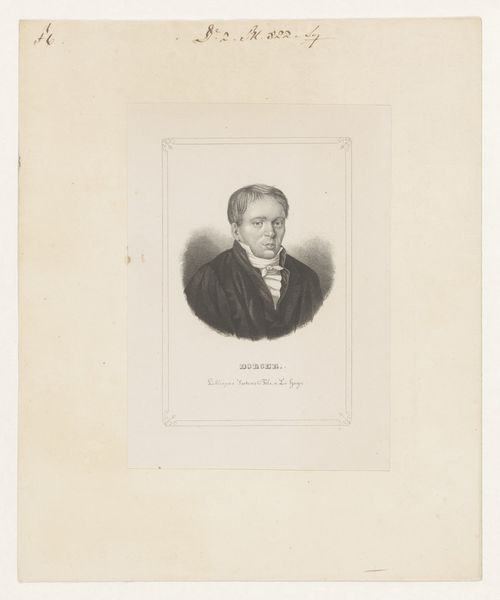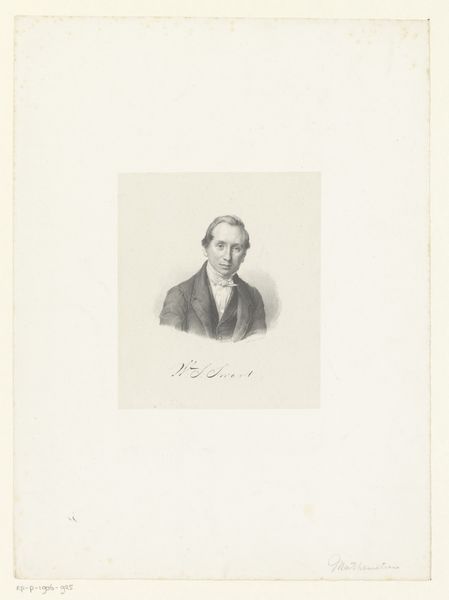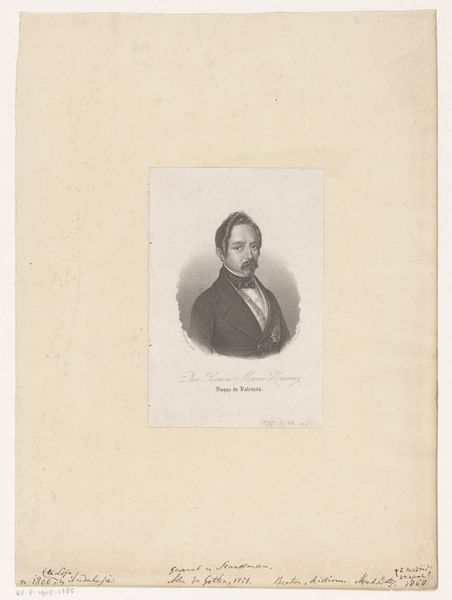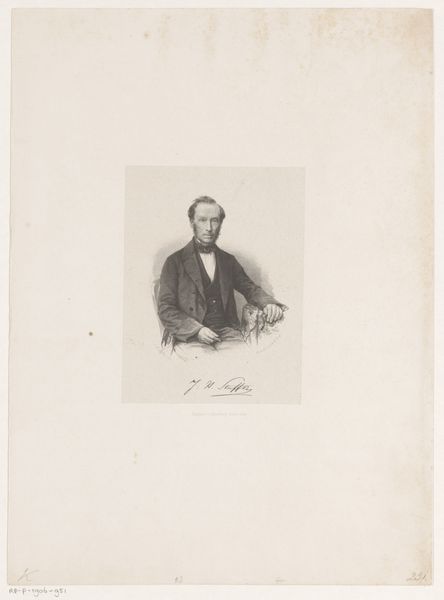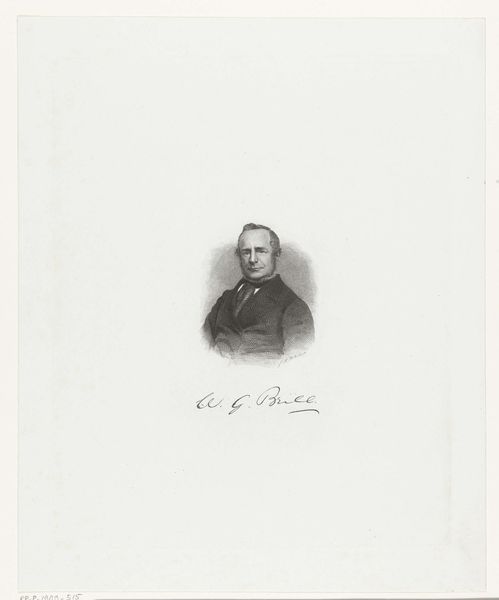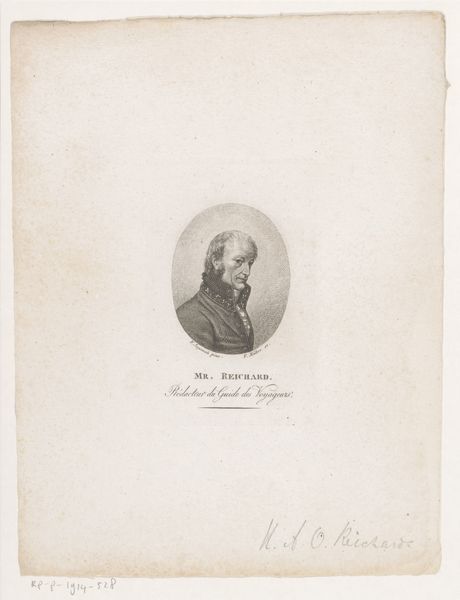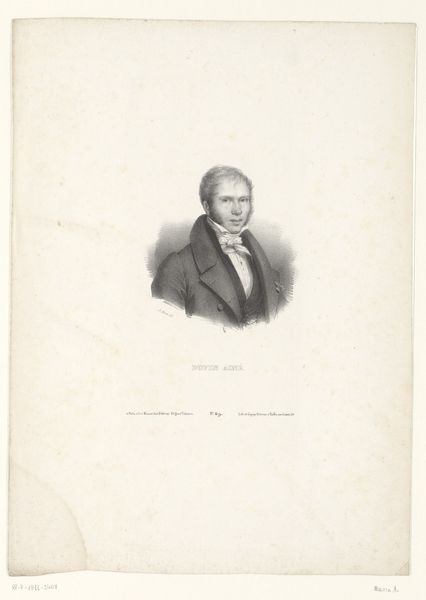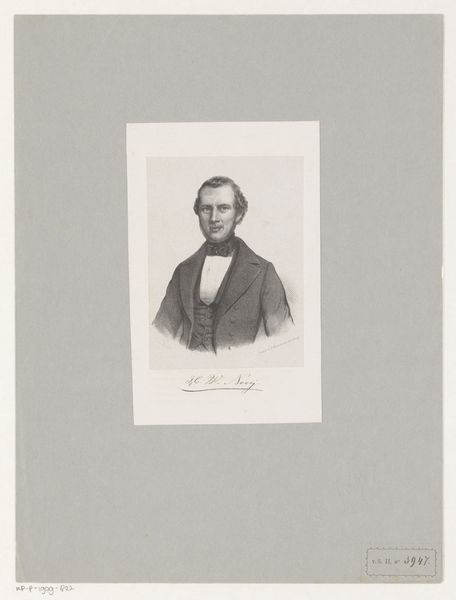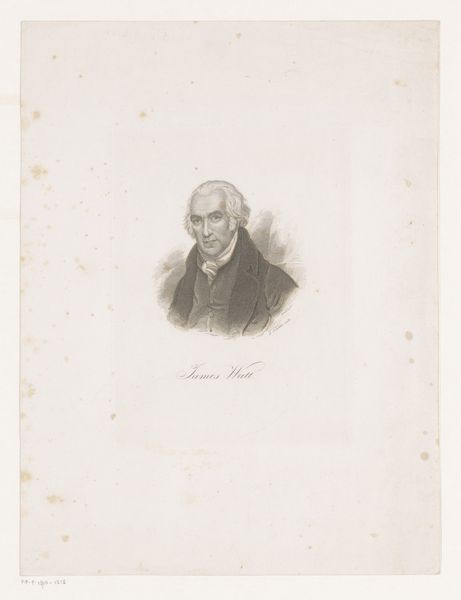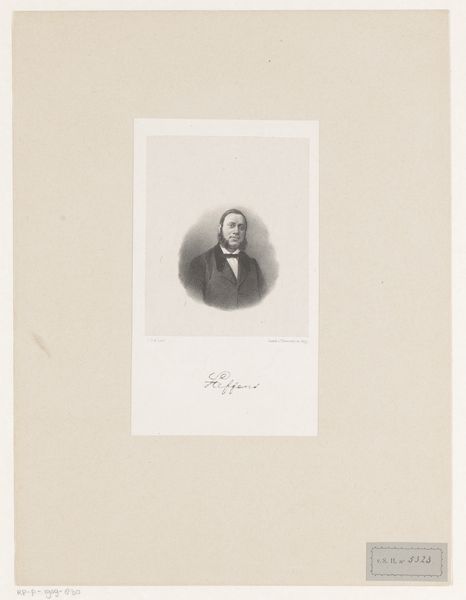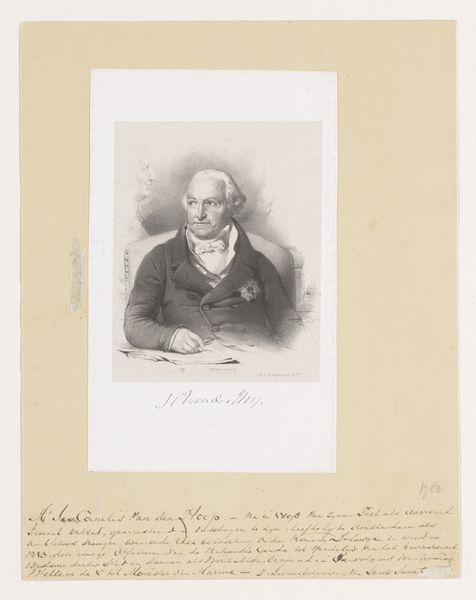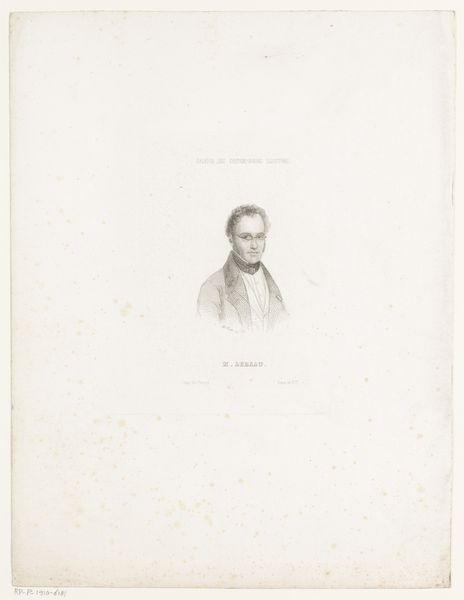
drawing, paper, graphite
#
portrait
#
drawing
#
paper
#
graphite
Dimensions: height 200 mm, width 125 mm, height 335 mm, width 250 mm
Copyright: Rijks Museum: Open Domain
Curator: Here we have a portrait, rendered in graphite on paper, entitled "Portret van Pieter Otto Coenraad Vorsselman de Heer." The piece is dated 1843. Editor: It feels terribly buttoned-up, doesn't it? All that careful cross-hatching to define the form—the crisp lines of the suit and tie—it seems to reinforce a very rigid idea of masculinity. Curator: Notice how de Lange models the figure with a delicate, almost atmospheric touch. The subtle gradations in tone create a real sense of volume, particularly around the face. This creates a play between precise detail and an ethereal quality, a pictorial trope of the day. Editor: But what does that 'ethereal quality' really convey? This man held positions of power. Without contextual notes, the drawing alone, seems intent on upholding a bourgeois ideal; an objective image of respectability stripped of complexities or perhaps inequalities tied to that status. Curator: Yet observe the compositional choices. The head and shoulders are framed within a distinct rectangle of space. The eye is drawn, quite consciously I think, into his very presence through carefully designed, self-contained, visual field. The text that follows is merely subordinate. Editor: And yet the added verse tells another tale of an elite education; classical knowledge and social mobility marking class divisions. Surely this work begs to be explored from such a lens. It is through interrogating such assumptions we can start a relevant conversation. Curator: It appears the artist strived to portray, within strict confines, a refined likeness, expressed with exceptional control of line and tone, as dictated by academic tradition of its time. Editor: And for me, that adherence to tradition, however skillfully executed, reinforces the historical structures and power dynamics inherent in portraiture of this kind. We have only scratched the surface here.
Comments
No comments
Be the first to comment and join the conversation on the ultimate creative platform.
